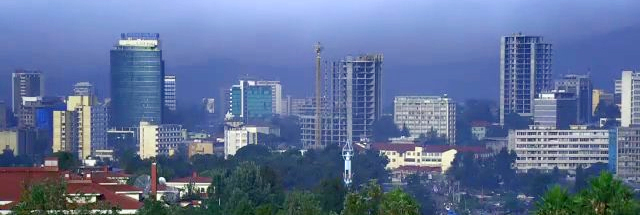World Bank Sees Ethiopia GDP Grow at 7 Percent for Medium Term

ADDIS ABABA  Ethiopia‘s economy is likely to grow seven percent a year over the next three to five years, below its average of the last decade, and to push that rate higher, the government needs to change policy to encourage private investment, the World Bank said.
While seven percent GDP growth would be the envy of finance ministers in Western economies, it would fall short of an average rate of 10.6 percent that Ethiopia said it achieved in the last 10 years with its state-interventionist policies.
It would also be insufficient to meet Ethiopia’s target of reaching middle-income status by 2025. The bank says that goal is still within reach, however, if the government shifts the balance from public to more private investment.
â€ÂWe still think growth could be robust – in the order of seven percent in the medium term would not be unexpected,†said Lars Christian Moller, the bank’s lead economist in Ethiopia, in an interview on Monday.
The World Bank estimates Ethiopia’s economy grew seven percent in the fiscal year July 8, 2012 to July 7, 2013, below the government’s 10 percent estimate.
Moller said Ethiopia’s $43 billion economy would need to repeat its performance of the last decade to become a middle income country – defined by the bank as one with a gross national income (GNI) per capita of around $1,430 – in 12 years.
The World Bank put Ethiopia’s GNI at $410 in 2012.
Ethiopia is banking on massive state-supported energy and transport projects to help transform its agrarian economy.
Infrastructure spending required financing equivalent to 19 percent of Ethiopia’s GDP in fiscal 2011-2012, the World Bank estimates.
But while public investment in Ethiopia is the third highest in the world as a percentage of GDP, private investment is the sixth lowest.
Major sectors including retail, transport, banking and telecoms are closed to foreign investors.
Double-digit inflation again?
Growth has been driven by an expansion in services, now the largest economic sector, and agriculture. Ethiopia’s main exports include coffee and horticulture products, and it is also a big aid recipient.
Two thirds of Ethiopia’s 8.5 percent GDP growth in 2011-2012 could be ascribed to public investment, the World Bank said.
Even though the public investments are intended to benefit the private sector in the long run, they are depriving the private sector of finances in the short term, Moller said. “And that is where a deliberate choice is being made,†he added.
â€ÂMaybe there are some really good private investment projects out there that could deserve to get that credit, that could actually make the economy grow even faster,†Moller said.
He added that Ethiopia should keep monetary policy tight to head off inflation, which could quickly return to double digits.
The annual inflation rate accelerated to eight percent in July from a 2013 low of 6.1 percent in April. It exceeded 40 percent in 2011.
A loose fiscal stance and periodic external price shocks have left Ethiopia vulnerable to price spikes. Its public investment program has injected liquidity into the market, fueling inflationary pressures.
â€ÂWe are a little bit wary that inflation is going up and perhaps could hit double-digit levels again,†within the next six to 12 months, Moller said.
So far, Ethiopia has managed to keep down inflation by using its foreign exchange reserves to mop up liquidity.
That has raised questions within Ethiopia’s private sector over how easily the government can sustain its spending program and keep inflation in single digits at the same time.
â€ÂThe fiscal stance is loose, and so that is contributing to inflationary pressures,†Moller said. “So that would be another benefit of slowing down on public investment; you could maintain a lower level of inflation.â€Â
Reuters



